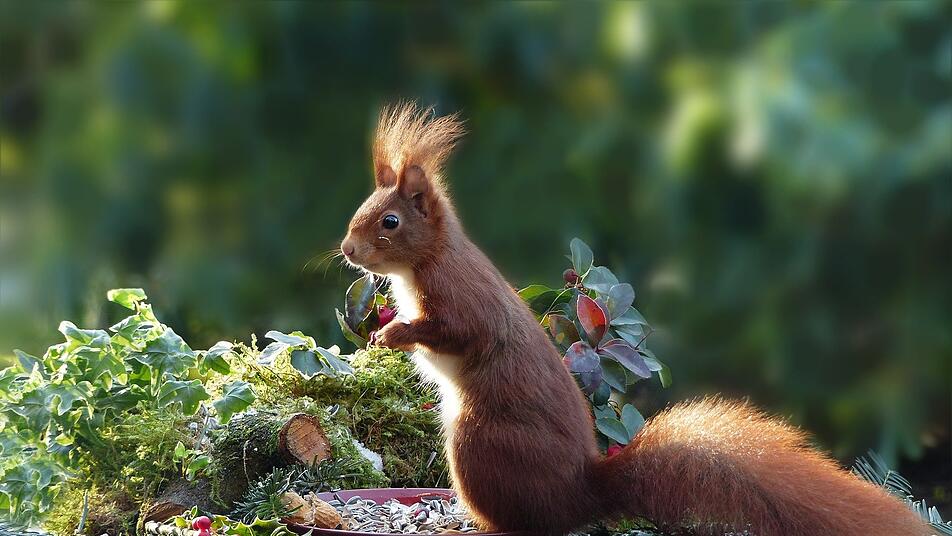In the seemingly tranquil realm of a garden, a hidden world of intricate animal behavior and communication unfolds, revealing a fascinating tapestry of life and interaction. From the fluttering wings of butterflies to the industrious activities of ants, the behaviors exhibited by garden animals are not only captivating to observe but also provide valuable insights into the complexities of their survival strategies and communication mechanisms. Garden animals, both vertebrates and invertebrates, engage in a wide array of behaviors that are often finely tuned to their environment and evolutionary history. Take for instance the mesmerizing courtship dances of birds, where vibrant plumage and melodious songs are displayed to attract mates. These behaviors are not merely for aesthetic pleasure they are essential for ensuring successful reproduction and the continuation of their species. Observing these behaviors within the garden ecosystem offers a unique glimpse into the delicate balance between natural selection and reproductive success.
 Furthermore, the bustling activities of insects like bees and ants illustrate the remarkable efficiency of social structures within a garden. The waggle dance of honeybees, a complex form of communication, is a prime example of how animals transmit information about the location of food sources to their hive mates. By interpreting the angle and duration of the dance, fellow bees are able to decipher the direction and distance of the foraging site. This intricate dance not only underscores the remarkable intelligence of these tiny creatures but also highlights the significance of effective communication in their survival. Animal behavior in the garden also sheds light on the interplay between predator and prey. The seemingly erratic flight patterns of butterflies, for instance, are not merely random but are designed to confuse and evade their predators. The vibrant colors of some species of Tier im Garten serve as warning signals to potential predators, signaling their toxic or unpalatable nature—a phenomenon known as aposematism. These interactions illustrate the evolutionary arms race between species, where behaviors and adaptations evolve in response to the challenges posed by other members of the ecosystem.
Furthermore, the bustling activities of insects like bees and ants illustrate the remarkable efficiency of social structures within a garden. The waggle dance of honeybees, a complex form of communication, is a prime example of how animals transmit information about the location of food sources to their hive mates. By interpreting the angle and duration of the dance, fellow bees are able to decipher the direction and distance of the foraging site. This intricate dance not only underscores the remarkable intelligence of these tiny creatures but also highlights the significance of effective communication in their survival. Animal behavior in the garden also sheds light on the interplay between predator and prey. The seemingly erratic flight patterns of butterflies, for instance, are not merely random but are designed to confuse and evade their predators. The vibrant colors of some species of Tier im Garten serve as warning signals to potential predators, signaling their toxic or unpalatable nature—a phenomenon known as aposematism. These interactions illustrate the evolutionary arms race between species, where behaviors and adaptations evolve in response to the challenges posed by other members of the ecosystem.
Communication among garden animals is not limited to visual displays or dances vocalizations and chemical cues play crucial roles as well. Similarly, the chirps of crickets and the croaks of frogs create an auditory landscape that signifies the health and dynamics of the garden ecosystem. Chemical signals, such as pheromones emitted by insects, carry messages related to mating, territorial boundaries, and danger alerts, orchestrating an intricate symphony of interactions that may go unnoticed by human observers. As we unravel the mysteries of garden animal behavior and communication, it becomes evident that these observations are not just captivating curiosities they hold implications for our understanding of ecology, evolution, and even human behavior. The delicate balance of interactions within a garden mirrors the delicate balance of ecosystems on a larger scale, underscoring the importance of preserving biodiversity and habitat integrity. By studying these behaviors, we not only gain a deeper appreciation for the intricate web of life in our own backyards but also contribute to a broader understanding of the dynamic forces that shape the living tapestry of our planet.